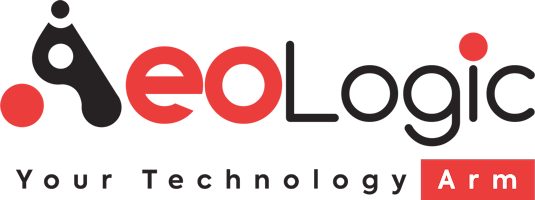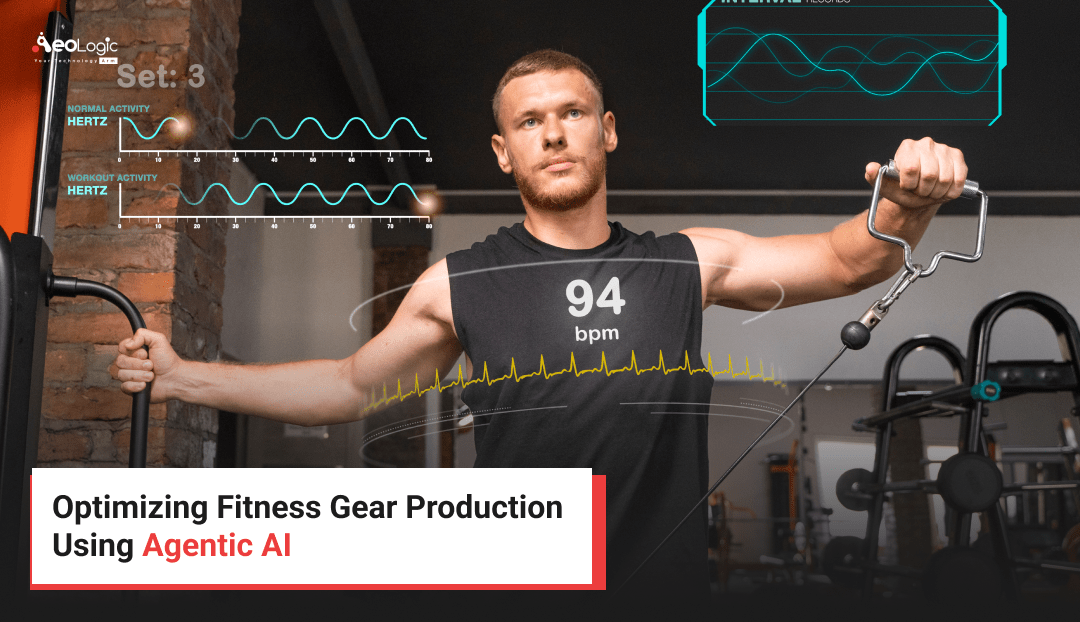The fitness equipment sector is experiencing a boom over the past few years spearheaded by growing awareness of health and the emergence of the fitness-at-home market. Nevertheless, the manufacturing of quality fitness equipment, starting with dumbbells, resistance bands, and smart treadmills to wearable devices, is also associated with complicated issues. Challenges encountered by manufacturers concern supply chain inefficiencies, the variable demand, quality control, and sustainable production methods. Then comes agentic AI, which is a revolutionary technology that enables the business to transform production processes in the most efficient and flexible ways. This blog discusses the disruptions of agentic AI in the production of fitness equipment and puts this into practical guidance for manufacturers, industry players, and technology enthusiasts.
What is Agentic AI?
Agentic AI depicts the ability of artificial intelligence systems to be powered with a large level of autonomy, decision-making processes and adaptability. In comparison to the more conventional AI that often comes with predetermined rules or patterns, agentic AI may autonomously design goals and strategies and perform tasks in changing environments. It is an agent who is proactive and can reason, learn and communicate with other systems or people in order to produce desired results.
When applied to the production of fitness gear, agentic AI is installed into manufacturing systems, supply chains, and data analytics and streamlines the processes. The fact that it can handle huge amounts of raw data, make predictions, and optimise workflow makes it a game changer in the industry that requires precision, scalability, and innovation.
The Challenges in Fitness Gear Production
So, the following are the main pain points in the manufacturing of fitness equipment, and before discussing how Agentic AI can help with these issues, it is worth enumerating them in the first place:
1. Complexity of the Supply Chain: The manufacturing of fitness gear uses the global supply chains in regard to raw materials such as steel, rubber and electronics. Glitches like delays or shortages may disrupt production lines.
2. Demand Volatility: The preference of consumers is highly dynamic, where trends such as smart fitness equipment or sustainable materials will cause the demand to shift. The manufacturers have to tune up flexibly on not overstocking or having stock-out issues.
3. Quality Control: It is necessary to ensure the same level of quality of various products, such as weight plates and connected fitness trackers. However, this is difficult to do at scale.
4. Sustainability Pressures: Green manufacturing processes are demanded by the consumers and the regulators, meaning that the manufacturers have to eat less and use less energy.
5. Cost Management: A continuous battle between cost-efficiency and innovation, especially in the case of small and medium enterprises (SMEs) towards competition with the leaders in the industry.
The above challenges are proposed to be solved with agentic AI solutions that can help decision-making, industrial processes automation, and real-time adaptability.
How Agentic AI Optimizes Fitness Gear Production
Streamlining Supply Chain Management
Interruptions in supply chains can hamper schedules in production and raise expenses. This issue is addressed with the help of predictive analytics and real-time data integration offered by agentic AI. As one example, an agentic AI system might observe information relating to global supply chains, e.g., shipping hiccups, availability of raw materials and geopolitical occurrences, to predict problem areas. It is able to propose alternative suppliers or adjust procurement schedules at an early age by considering the past data and the present state of the market.
In addition, the agentic AI will be able to negotiate with the suppliers on its own. With the help of natural language processing (NLP), it negotiates with the vendors, assesses quotes, and guarantees desirable pricing, time, and quality that matches preset specifications. This lowers manhandling and chances of errors and ensures a constant supply of materials.
Case Study Example: One of the major fitness equipment companies installed an agentic AI to oversee its rubber and steel supply network. Weather and other factors caused a possible shortage in Southeast Asia of rubber, and the AI foresees it coming and pre-ordered suppliers in South America. This decision prevented the company from incurring a projected two million dollars’ worth of possible downtimes with fitness equipment AI (agentic AI agency).
Demand Forecasting and Inventory Optimization
A proper consumer demand forecast is vital in preventing either over- or underproduction. Agentic AI is perfect to do so because it can evaluate various data kinds, such as the trends of social media, e-commerce sales, or the patterns of fitness app use. A good example is that when a post on sites such as X suggests that there has been an increase in the number of people interested in the compact home gym equipment, the AI can decide to modify the production plans before focusing on such items.
Also, agentic AI provides maximum inventory by considering just-in-time production and stocks. It computes optimum inventory taking into consideration the lead times, capacity of production, and market trends, and it saves on warehousing costs and wastages.
Practical Application: A wearable fitness device company applied the agentic AI method to find real-time data of X and fitness forums. The AI identified increasing interest in buying heart-rate monitoring bands on the part of runners. This increased production of the company by threefold, and by varying the marketing strategies, resulted in an incremental 15 per cent market share increase in three months.
Enhancing Quality Control with AI-Driven Inspection.
There is no alternative to quality in the manufacture of fitness equipment because defective fitness works may result in safety hazards or brand tainting. Computer vision and machine learning are incorporated into agentic AI, which is able to perform real-time quality inspection of production lines. As an example, it can identify micro-defects in the coating of dumbbells or anomalies in the performance of a treadmill motor that a human inspector can overlook.
Compared with conventional quality control mechanisms, Agentic AI will get smarter with every inspection, ensuring its effectiveness in determining quality. It is also able to rank the so-called defects in terms of severity: one that needs to be fixed immediately and those that need to be recorded to be analysed in a batch. This minimises waste, hence making it achieve industry specifications such as ISO 9001.
Real-World Impact: An assembly line of resistance bands that was using an agentic AI system to examine and check the elastic qualities and sturdiness of the bands at the assembly line. The AI detected the repeated defect in a series of bands due to an improperly calibrated machine before issuing a recall that would have incurred additional spending to the company worth half a million dollars.
Driving Sustainability in Production.
In the wake of consumer demand and governmental regulations, sustainability becomes an increasing concern on the part of sports equipment manufacturers. It is through agentic AI that efficiency of resource utilisation and reduction of environmental effect can be achieved. As an example, it can study the consumption patterns of energy in factories and advise on changes, like high energy-consuming processes during low-peak hours to minimise the cost and the carbon footprint. s.
Finally, agentic AI facilitates the process of circular manufacturing as it helps to find alternatives for recycling the materials or reusing flawed goods. It is also possible to rate suppliers according to their sustainable practices so that they can meet environmentally friendly objectives.
Example in Action: A treadmill-producing company turned to Agentic AI to optimise its plastic moulding procedure and leave a lesser impact on its wastage of plastic materials; the company left 20 per cent of its wastage behind. An AI suggestion was also made to change to a supplier using biodegradable plastics, which made the brand more appealing to environmentally caring consumers.
Cost Optimization and Scalability.
Use of agentic AI will optimise the allocation of resources, as well as automate tedious activities that eliminate the cost of doing business. As an example, it can arrange the production runs to maximise the use of the machine, minimising idle time and energy consumption. Another area it determines is where cost savings may be obtained through bulk buying or contract renegotiations with suppliers.
In the case of SMEs, agentic AI is an opportunity to erase the playing field gap, allowing production at scale without enormous capital investments. It enables small businesses to receive comprehensive analytics and automation features to be used on small-scale manufacturing facilities to manage costs and drive greater productivity, as it can connect to cloud-based manufacturing systems.
Success Story: A lid that makes the kettle smart was developed by a startup, and they used agentic AI to optimise their production schedule, which saved 25% on their operational cost. The AI also provided a source of a low-cost electronics provider, so the startup was able to release a competitive set of products in half a year.
Implementing Agentic AI in Fitness Gear Production
Step 1: Assessing Needs and Goals
Manufacturers need to have their pain points and goals before implementing Agentic AI. Are the disruptions in the supply chains the main problem, or is quality control the greater one? Setting up a specific goal, say, lowering costs of production by 15% or quickening delivery times by 20%, brings about a correct choice of AI tools and success measures.
Step 2: Choosing the Right AI Platform.
Not every agentic AI system is the same. The manufacturers ought to seek platforms which provide:
- Integration Capabilities: Compatibility without disruption to other ERP, CRM and IoT systems.
- Scalability: the capacity to contend with expanding stores of data and manufacturing needs.
- Customisability: Algorithms adapted with respect to particular production processes.
- Security: Strong data security to prevent the leakage of the proprietary designs and customer data.
Prominent options are those of IBM Watson, Google Cloud AI, and other more focused ones, such as those of xAI, offering agentic AI functionality on an advanced scale to industrial applications with agentic AI agency.
Step 3: Data Integration and Training
Agencies of AI are data-obsessed. The producers need to combine the information of different sources (including manufacturing technologies, supply chain records, and market statistics) in one system. AI is then trained with past data to know the trend in production, level of defects and market trends. This step can take some time, from weeks to months, according to the complexity of the data.
Step 4: Pilot Testing and Iteration.
Begin with some form of pilot project, perhaps making a single production line or chain segment run more optimal. Inspect measures of key performance (KPIs) such as cost savings, defect rates and delivery times. Feedback will help to adjust the algorithms of the AI to the specifics of the fitness gear industry.
Step 5: Full-Scale Deployment.
When the pilot is successful, implement agentic AI throughout the production ecosystem. Measuring performance and updating it continue to ensure that the market changes and production demands are maintained with fitness equipment ai.
The Role of Agentic AI Agencies.
However, using the agentic AI may be complicated, particularly when the limited capability of a company to offer AI lies in-house. Here the agentic AI agencies enter the picture. These are expertised companies that provide end-to-end services like strategy, system design, implementation, and maintenance. They assist manufacturers:
- Determine the application of AI in production with the most significant benefits.
- Design AI according to particular products of fitness equipment.
- Educate employees to collaborate with AI technology.
- Make sure that it is in agreement with industry rules and data privacy.
Working with an agency that specialises in agentic AI would help to speed the adoption process and achieve a greater ROI, especially when using new technologies like smart fitness equipment by SMEs.
Future Trends: Agentic AI in Fitness Gear Innovation
Due to the future of agentic AI, the prospects of its practical use in the franchise of fitness gear will multiply. New trends are:
- Individualised Equipment Design: custom-designed fitness equipment based on AI-participating generative design frameworks will produce pieces that are personalised to a variety of personal requirements, e.g., ergonomic dumbbells or dynamic resistance bands.
- Predictive Maintenance: Agentic AI will foresee failure of the production machine and minimise the failures and thereby improve the duration of the machine.
- Smart Factory Integration: Fully autonomous factories will be enabled with AI to complete the work of producing fitness equipment with the seamless collaboration of machines, robots, and AI agents ( fitness equipment ai ).
- Consumer Insights Integration: Agentic AI will intake the real-time data generated by fitness apps and wearables and feed it into product development, thus avoiding the mismatch between users and products.
Challenges and Considerations
On the one hand, agentic AI is an amazing potential; on the other hand, it has its problems as well:
- Costs of implementation: The initial cost of adopting AI is high due to the cost of software, hardware and training.
- Data Quality: The quality of data is important in the efficiency of AI. Bad data will result in bad decision-making.
- Adaptation of Workforce: The workforce might be opposed to the usage of AI because of the belief that they are closing in to lose their jobs. Effective communication and upskilling programmes are vital.
- Ethical Issues: Ethical issues arise on how to control autonomous AI systems to avoid accidental outcomes, including the use of biased suppliers or maximising at the cost of quality.
The manufacturers are required to overcome such challenges through planning, stakeholder involvement and sound governance structures.
Conclusion
Agentic AI (agentic ai agency) is also revolutionising the manufacturing process of fitness equipment by overcoming some of the most pertinent issues in supply chain management, demand planning, quality assurance, sustainability, and cost optimisation. In addition to its capability of fully automating the manufacturing process, providing flexibility and responsiveness to evolving conditions, and compatibility of the system to be integrated into the existing systems, it serves as a powerful toolkit to help manufacturers remain competitive in an industry that constantly changes. As a result of collaboration with Agentic AI agencies, as well as implementing an effective strategy using systematic phases, companies will have access to impressive efficiency increases and innovation.







